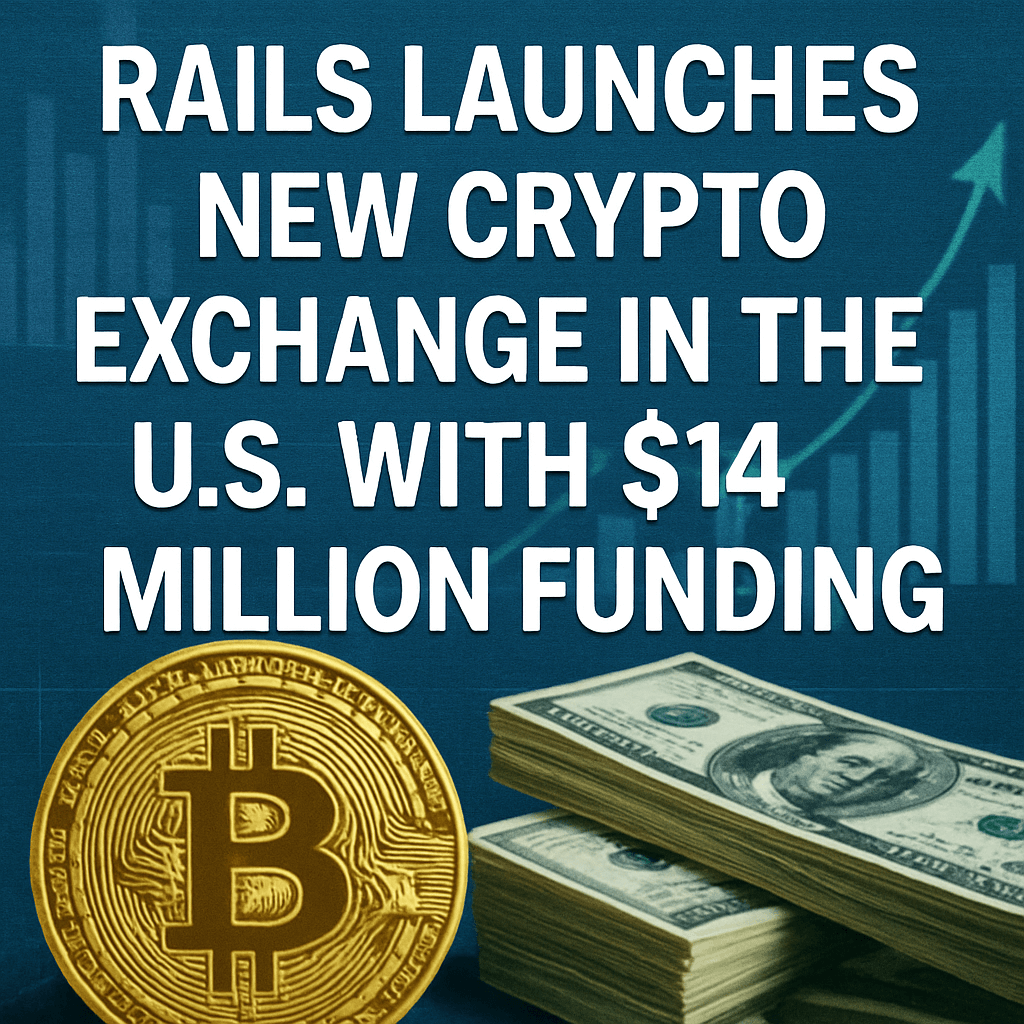Rails Launches New Crypto Exchange in the U.S. with $14 Million Funding

A new entrant in the crowded cryptocurrency landscape, the exchange known as Rails is set to launch in the U.S. this week. The platform is equipped with $20 million in funding, which includes $14 million in new token warrants aimed at creating a unique trading environment for U.S.-based cryptocurrency investors. Rails plans to focus on a specific and sophisticated asset class: perpetual futures, commonly referred to as perps.
Understanding Perpetual Futures
Perpetual futures are a distinct type of derivative in the cryptocurrency space, which allow traders to speculate on the price movements of cryptocurrencies without any expiration date. Traditional futures contracts come with a specified maturity date, after which they settle, but perpetual futures enable traders to maintain their positions indefinitely, provided they can meet margin requirements.
Historically, U.S. traders have faced challenges accessing perpetual futures due to regulatory ambiguity, with such instruments primarily available on offshore exchanges. Rails aims to change that landscape. In conversations with Fortune, cofounder and CEO Satraj Bambra emphasized that the decision to launch in the U.S. was strategic, stating, “This is not random. No one would do this in the previous administration.” This shift comes amid evolving regulatory frameworks that could pave the way for more flexible trading conditions under the current U.S. administration.
A Vision for a Better FTX
While many crypto founders might shy away from comparisons to the imploded exchange FTX, Bambra and his chief backer, Sam Lessin from Slow Ventures, are aiming to develop a platform that embodies the best qualities of FTX without its notorious pitfalls. They aspire to create a more reliable trading infrastructure by focusing heavily on perps, which were central to FTX’s allure.
Current U.S. exchanges predominantly offer spot trading for major cryptocurrencies like Bitcoin and Ethereum, where users pay the current market price to buy or sell assets. However, a significant subset of advanced traders seeks tools that allow them to predict future price movements actively. Derivatives such as perps cater explicitly to these needs, offering a more dynamic trading environment.
Confronting FTX’s Failures
Many of FTX’s issues stemmed from its centralized model, which allowed the exchange to control user assets. This practice ultimately led to significant losses when the platform mismanaged funds and engaged in risky investments. In contrast, Rails is incorporating on-chain custody solutions that allow users to maintain control over their assets, thereby increasing transparency and security.
Bambra, who also manages a $100 million liquid fund for Round13, a prominent Canadian crypto venture firm, has personal experience with FTX’s fallout, although he later recovered a “significant” amount during its bankruptcy proceedings. His disappointment emphasizes Rails’ commitment to user safety and verified asset ownership on its platform, which bridges the speed of centralized exchanges with the trustworthiness of decentralized solutions.
Regulatory Landscape: A Changing Environment
Rails’ funding has benefited from a notable evolution in the U.S. regulatory landscape surrounding cryptocurrency. With the recent election of Donald Trump, regulatory bodies like the Commodity Futures Trading Commission (CFTC) have begun to endorse clearer guidelines for cryptocurrencies and derivatives. Outgoing commissioner Summer Mersinger remarked in May that perpetual futures might see regulatory approval in the U.S. “very soon.” Mersinger now leads a crypto trade association, signifying her ongoing commitment to fostering an innovative financial ecosystem.
Other major players in the crypto exchange sector are also beginning to test the waters with perpetual futures. For instance, Coinbase announced plans to introduce similar products but limited to certain user segments, reflecting a cautious approach to adapting to this complex market.
Rails’ Product Offering
Upon going live this week, Rails will offer perpetual futures trading for four cryptocurrencies: Bitcoin, Ethereum, Solana, and XRP. There are plans to expand this asset base in due course, aligning with the evolving interests of traders. The exchange will also introduce its native token later in the fall, aimed at enhancing user engagement, though it will not function as collateral, differing from other notable tokens associated with platforms like FTX and Binance.
Conclusion: Looking Ahead
The introduction of the Rails exchange signifies a significant move in the ongoing evolution of the cryptocurrency trading landscape, particularly for U.S. traders. By focusing on innovative products like perpetual futures, Rails may well tap into the sophisticated trading habits of a growing segment of the market. The success of this venture will depend on continued regulatory clarity and user adoption, as the company strives to differentiate itself in a market still reeling from high-profile failures.
Learn more: Explore short, engaging lessons about the crypto landscape with Fortune’s Crypto Crash Course.
Source: fortune